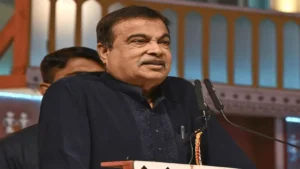The Union Cabinet, chaired by the Prime Minister Shri Narendra Modi, has accepted the recommendations of the High-Level Committee on Simultaneous Elections (One Nation One Election – ONOE) under the chairmanship of former President Shri Ram Nath Kovind.
About ONOE
- The concept of “One Nation, One Election” envisions a system in which all state and Lok Sabha elections must be held simultaneously.
- This will entail restructuring the Indian election cycle so that elections to the states and the center coincide.
- This would imply that voters will vote for members of the LS (Lok Sabha) and state assemblies on the same day and at the same time (or in a phased manner as the case may be).
High-level Committee (HLC) on One Nation, One Election
- The HLC, popularly known as the Kovind panel after its chairman, former President Ram Nath Kovind, was constituted in September 2023.
- It was constituted to study the issues involving One Nation, One Election. It submitted its report in March 2024.
Simultaneous elections: recommendations of high-level committee
- Elections were held simultaneously between 1951 and 1967.
- Law Commission: 170th report (1999): One election to Lok Sabha and all Legislative Assemblies in five years.
- Parliamentary Committee 79th Report (2015): suggest methods for simultaneous elections in two phases.
- High Level Committee chaired by Shri Ram Nath Kovind extensively consulted a broad spectrum of stakeholders including political parties and experts.
- Extensive feedback has shown there is widespread support for simultaneous elections in the country.
Recommendations and way forward
- Implement in two phases.
- In the first phase: conduct Lok Sabha and Assembly elections simultaneously.
- In the second phase: Conduct local body elections (panchayat and municipalities) within 100 days of general elections.
- Common electoral roll for all elections.
- Will initiate detailed discussions throughout the country.
- Constitute an implementation group.
Constitutional Path to implement
- Before simultaneous polls are implemented, the Kovind panel suggested several constitutional amendments that will have to be cleared by Parliament, while the creation of a unified electoral roll will require ratification from a majority of the state legislatures.
- Article 368(2) on amending the Constitution states, “An amendment of this Constitution may be initiated only by the introduction of a Bill for the purpose in either House of Parliament, and when the Bill is passed in each House by a majority of the total membership of that House and by a majority of not less than two-thirds (Special Majority) of the members of that House present and voting.
- After it shall be presented to the President who shall give his assent to the Bill and thereupon the Constitution shall stand amended in accordance with the terms of the Bill.”
- For example, Present Government will require 362 votes, or two-thirds majority, in the Lok Sabha if it turns out in full strength.
Possible Challenges
- Implementing synchronized elections across India presents multiple challenges.
- These obstacles range from logistical and financial issues to constitutional, legal, as well as practical considerations, given the country’s size and regional diversity.
- A major concern was how to manage situations where a state or central government loses a no-confidence motion or is dissolved before completing its term.
- It would be impractical to require all other states to hold fresh elections simultaneously.




 India Becomes First Country to Commercia...
India Becomes First Country to Commercia...
 Centre Unveils ₹17 Lakh Crore PPP Projec...
Centre Unveils ₹17 Lakh Crore PPP Projec...
 Haryana to Launch India's First Hydrogen...
Haryana to Launch India's First Hydrogen...







